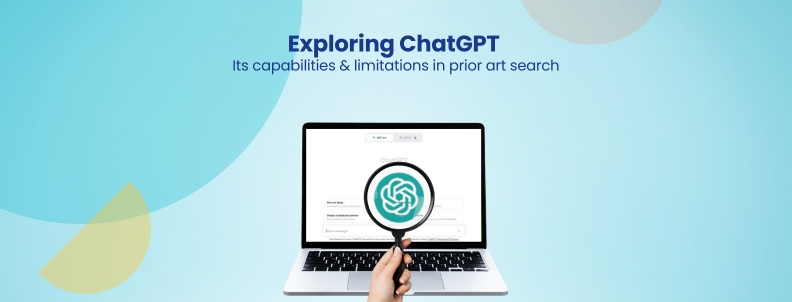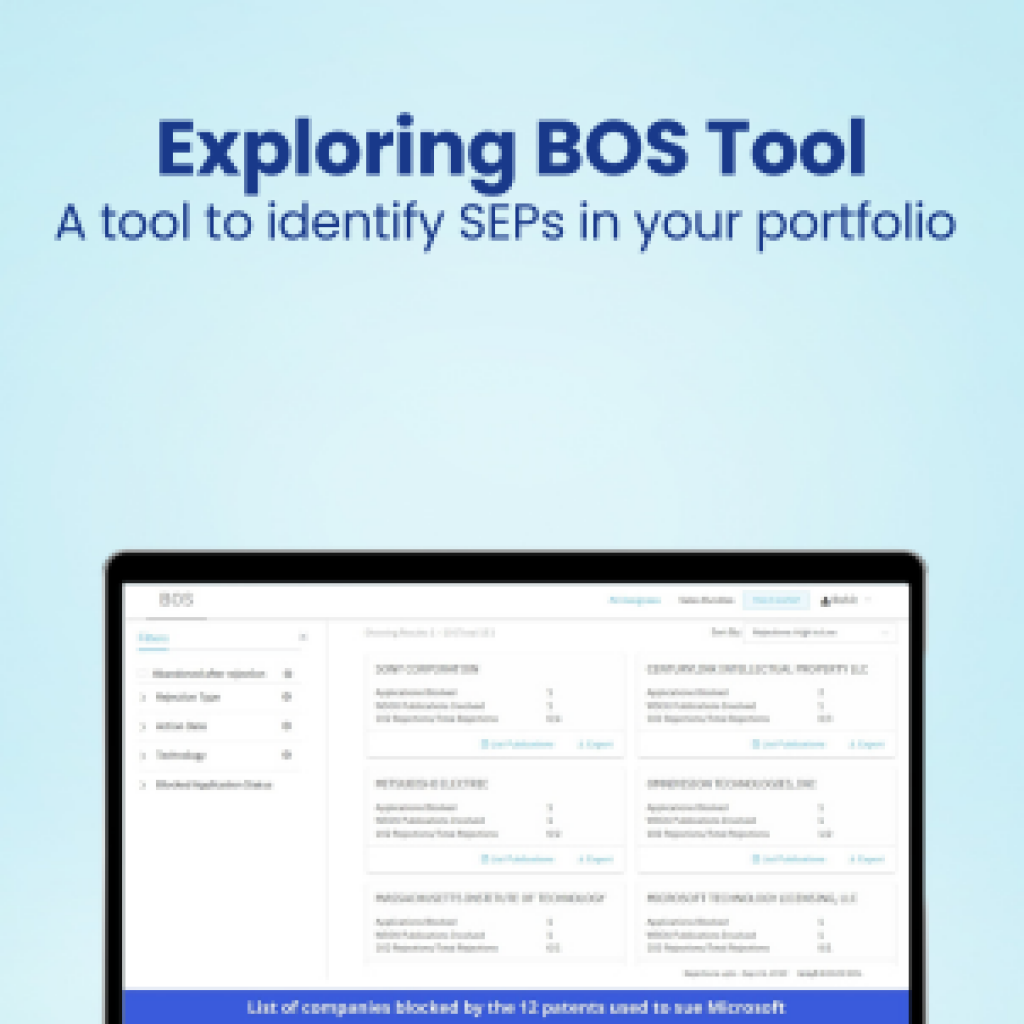In a world where ChatGPT, the cutting-edge AI language model by OpenAI, has rapidly transformed industries, the intellectual property (IP) sector is no exception. Its remarkable ability to extract profound insights from vast data pools raises intriguing questions about its impact on the IP industry, particularly in prior-art searches.
As research analysts, our curiosity led us to compare ChatGPT to our manual prior-art search method. Our hypothesis hangs in the balance: ChatGPT may offer speed but could encounter limitations, most notably restricted access to patent data.
Are we about to reveal an accurate prediction or debunk our own theory?
Let’s dive in and find out.
Direct Challenge to ChatGPT: Can It Dig Up Prior Art when given the patent number?
In the first part of exploring chatGPT, we tried being direct with it. We asked if it could find prior art for a given patent number.
Now that we were sure that ChatGPT could not give up as its been programmed to not get into legal conversations, we tweaked our methodology.
Using ChatGPT when performing various steps of prior art search
In the second part of using ChatGPT for patent search work, we wanted to leverage it for specific parts of prior art searches. So, we tried dividing the steps performed by the patent researcher into the following:
- understanding the patent,
- extracting the important keywords/terms/CPC classes based on the understanding,
- and finally, preparing the search formula or logic to search on the patent/non-patent databases.
Can Chatgpt Summarize A Patent If Given The Patent Number?
We picked a fairly simple patent related to parental control on a mobile phone, and as the first task, we asked ChatGPT to summarize the patent.
But before that, we briefly summarised the patent manually, focusing on the problem statement and not only the claim features.
“This patent can be summarised as Implementing a guardianship function at a mobile terminal to enable the guardian to learn the use of the mobile terminal in real-time. The function includes a module for providing guardianship information and a module for processing short messages.”
Based on our summary, our aim was to see if ChatGPT would also extract the problem statement and key solution of the patent while writing the summary. On giving the prompt to ChatGPT, it did produce the key features from the patent.
However, what we received was a broad summary of the patent. It failed to highlight the novel or the most important key feature of parental control from the patent. I think it was considering it as a text document and hence summarizing it based on its training history.
To take it a step further, we improved our prompt and provided ChatGPT with a detailed description of the claims from the same patent and asked for an explanation of the key terms.
ChatGPT delivered a module-by-module summary and an overall summary that mentioned the invention focus, which closely aligns with the solution described in the patent. Overall, ChatGPT’s performance was impressive after the tweaked prompt. Basically you have to train it to see the things where you want him to focus.
Can Chatgpt Search For Relevant Patent Keywords And Classes?
Just like the previous task, asking a direct question wasn’t helpful in this case either. ChatGPT provided domain keywords such as data mining, content recommendations, and recommendation systems, among others, without mentioning parental control at all.
During the patent search, finding relevant keywords depends on how well we understand the patent, and eventually, this leads to better search strings. Hence, as the second prompt, we shared the Claim of the invention with ChatGPT and then asked it to churn out some relevant keywords.
In this case, it gave us essential keywords like threshold and timer. However, some important terms, like parental control and guardian control, were still not captured.
Looks like ChatGPT was not able to deduce the purpose of the invention and focussed more on what was directly stated in the shared claim.
As we saw earlier, ChatGPT could not fetch the patent details when we provided it with the patent number. However, when we explicitly provided the background of the technology, ChatGPT was able to explain the problems discussed in the patent.
Therefore, we deduced that to understand the purpose of the invention disclosed in the patent, we must provide the background information from the patent to ChatGPT.
We further tested if ChatGPT could provide synonyms for these shared keywords. But if you see, most of the synonyms, just like the keywords, are generalized terms. Putting them in any search string would definitely increase a researcher’s work tenfold, as we might get too many irrelevant and repetitive results.
After keywords, we moved on to the classes. They are important in narrowing the search results to the target patent’s domain and when we tested ChatGPT to find relevant classes for the prior art search, we had a similar experience to that of keywords.
Through our first prompt, ChatGPT only provided us with broad classes. We then requested for narrower classes to improve the search results. This time, ChatGPT presented some classes that appeared to be useful to us.
However, upon examining their definitions, we discovered that most of them were inaccurate. This is a concerning issue as it may discourage researchers from depending on the information provided by ChatGPT without verifying it from a credible source. Therefore, we recommend that individuals double-check any output given by ChatGPT, mainly when it involves specific numerical or value-based data.
Can ChatGPT make strings for Google Patent Search?
Our product development team raved about ChatGPT’s programming and coding skills, so we had high expectations in this task. We asked ChatGPT to create a search formula using keywords and their synonyms from the previous task. Despite our high hopes, the output was underwhelming. We tried again with a different prompt, but the result was the same.
ChatGPT simply used a basic AND logic for all the search terms, which doesn’t make sense since the keywords are too general. For example, “mobile terminal,” “running time,” “program,” and “threshold” are all broad terms that, when combined, result in irrelevant search results.
Additionally, ChatGPT didn’t use any specialized truncations specific to narrow down the results during Google Patents Search. To establish a comparison between our manual search strings, here are a few strings that we would prepare to target the prior-art search of the respective patent.
(Mobile Terminal* OR smartphone* OR UE*1 OR terminal* OR user device*1 OR handset*1) NEAR/4 (parental control* OR guardianship function* OR child lock* OR child caring OR child care* OR guardian* control*)
(mobile application* OR app*1 OR software* OR android application* OR IOS application*) NEAR/4 (parental control* OR guardianship function* OR child lock* OR child caring OR child care* OR guardian* control*)
If you see ChatGPT’s output, it misses major keywords that are based on the problem statement and solution aspect. It also misses truncations such as” terminal*” or “device*,” that help capture various documents. Additionally, we have used the NEAR/4 operator to narrow down the result sets, which ChatGPT won’t be able to prepare without an elaborate prompt.
Basically again its training data does not include much examples of building search strings which is why we can expect him to not perform that well.
Conclusion
Does this mean that ChatGPT can’t be used for patent searches? The answer is not straightforward.
In theory, ChatGPT can be helpful for certain aspects of prior art searching. For instance, it can quickly explain patent claims and related keywords. It can also be used for surface-level searches, giving you a good starting point. However, the results you get from ChatGPT depend on the prompt you give it. To ensure accurate results, it’s best to provide your interpretation of the claims and some parts of the description.
But there’s a catch. ChatGPT is not suitable for highly technical patents, such as those related to telecommunication or audio/video coding. It fails to understand the essential concepts of the invention and generalizes the patent, which is unacceptable for narrow levels of technology. In such cases, ChatGPT cannot replace a manual search team.
ChatGPT has limitations because it doesn’t have access to databases, and its data is not in real-time. Therefore, AI lags way behind when finding prior art in non-patent literature. However, we are closely examining how AI will evolve in the coming years.
But until then, manual prior art searches still have the upper hand. See GreyB’s prior art search team in action.
Click the button below to get in touch with us.
Authored By: Rutwik and Avantika, Prior-Art Team
Edited By: Annie Sharma, Editorial Team










